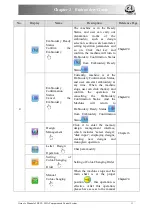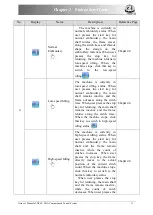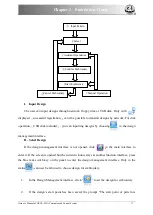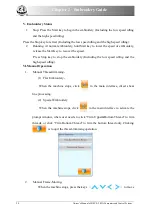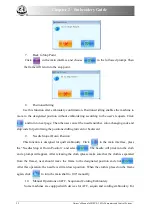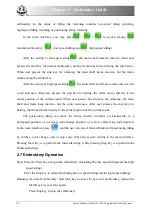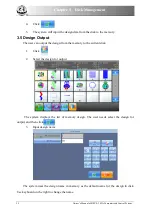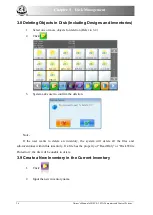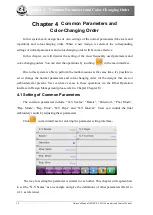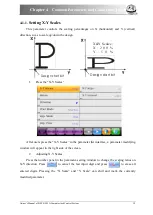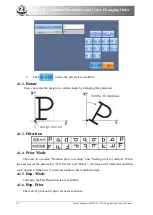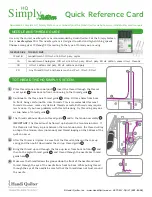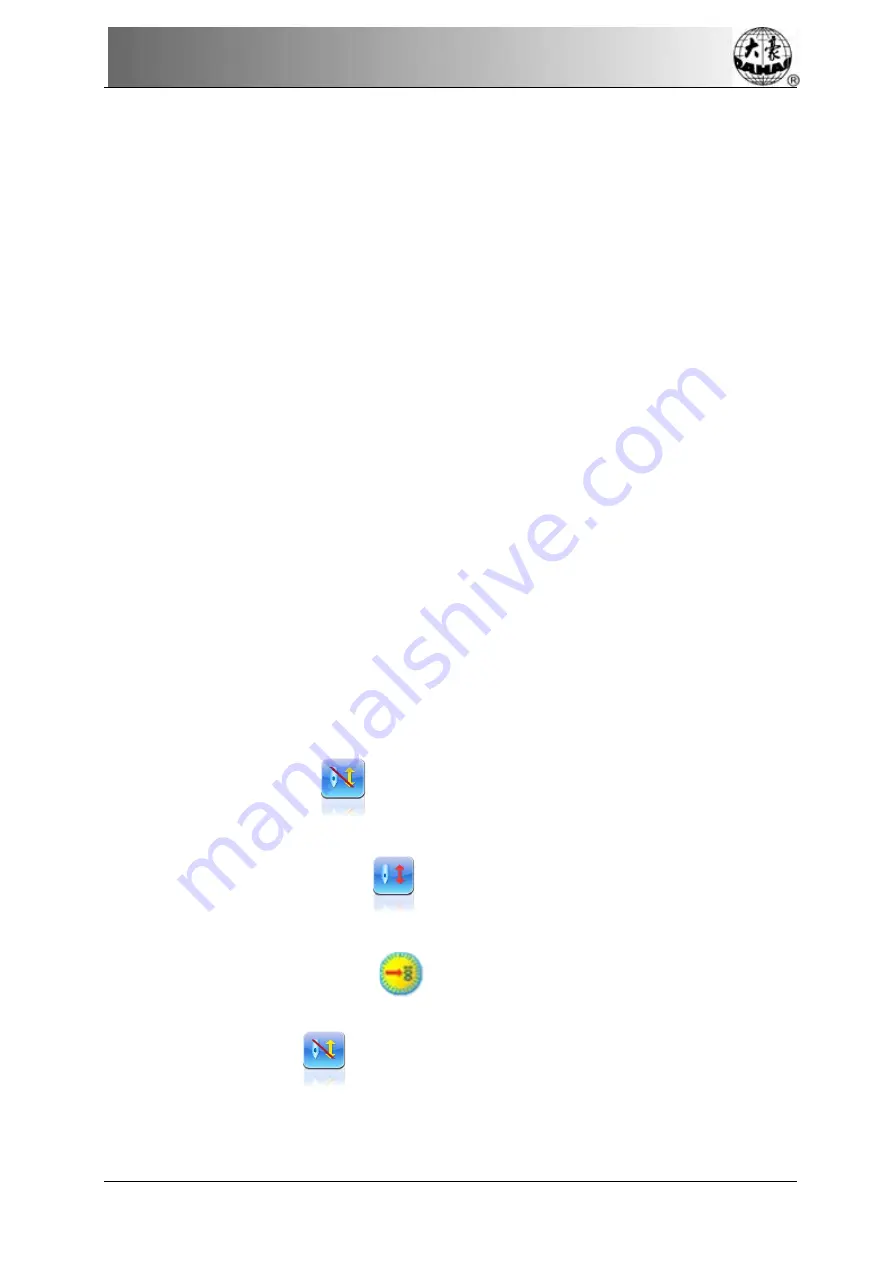
Chapter 2 Embroidery Guide
2.8 Thread-Breakage Detection
Based on different working principles, thread-breakage detection devices have three
types: thread take-up spring type, thread winding wheel (chopper wheel) type and mixed type.
For thread take-up spring type, it detects the thread-breakage by searching connection of
take-up spring and contact point. When thread breaks, the spring will close to the contact point.
In normal condition, this detecting type is sensitive to the face thread breakage, but can hardly
detect bobbin thread run-out. In case you change the embroidery thread, or thread tension
changes, you need to adjust spring pressure between the take-up spring and contact point.
When the spring pressure is too large, there will be False Alarm; when the spring pressure is
too small, there will be Missing Alarm.
For thread winding wheel type, it judges thread-breakage by detecting the winding wheel
angle. It is very sensitive in case of face thread breakage; in most cases of bobbin thread
run-out, the consumption of face thread will reduce, as a result, system will judge by statistic
method and send out warning. Though it can almost avoid False Positive, it is not as sensitive
as the spring-type.
For the mixed type method, the two can complement each other with their advantages,
which results in sensitive and stabilized detecting effect.
2.9 Working Status of Embroidery Machine
The machine has three working statuses:
:
I.
Embroidery Ready
preset parameters; choose embroidery designs and
other preparation work.
II.
Embroidery Confirmation
confirm the parameter settings to enter the
quasi-running status.
III.
Embroidery Running Status
embroidery.
Shift among these three working statuses
:
In preparation status (
is displayed), after you select design for embroidery and set
Owner’s Manual of BECS- 285A Computerized Control System
25

